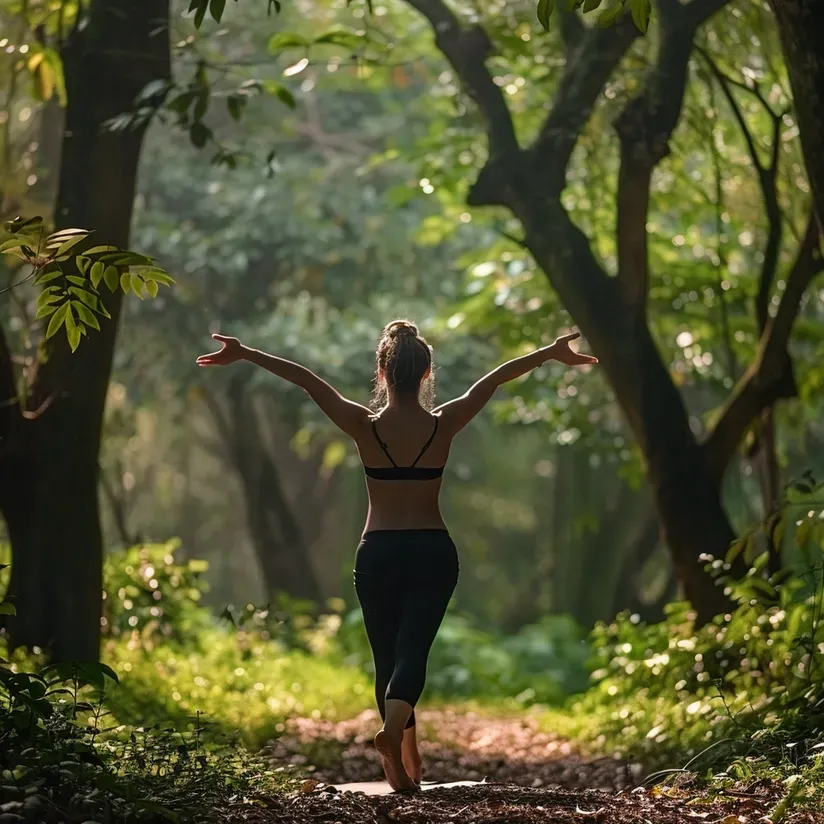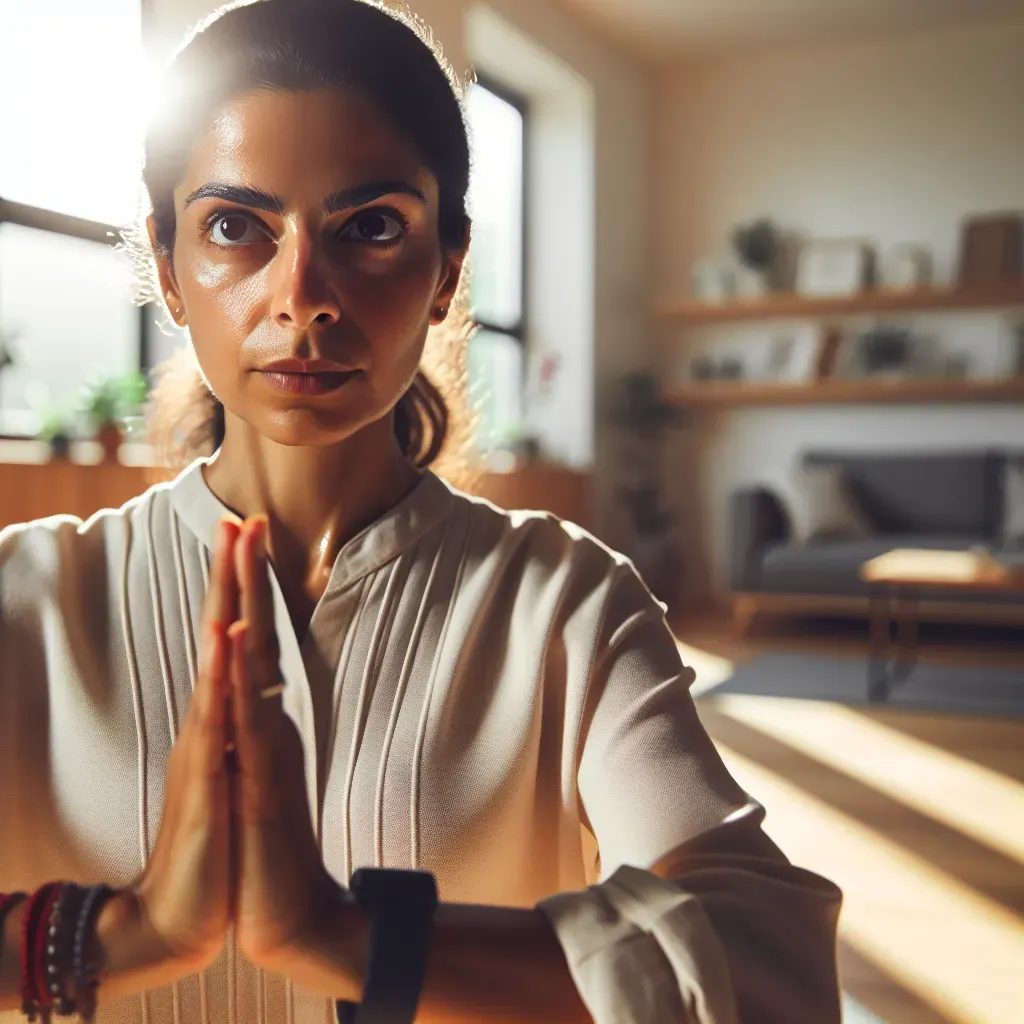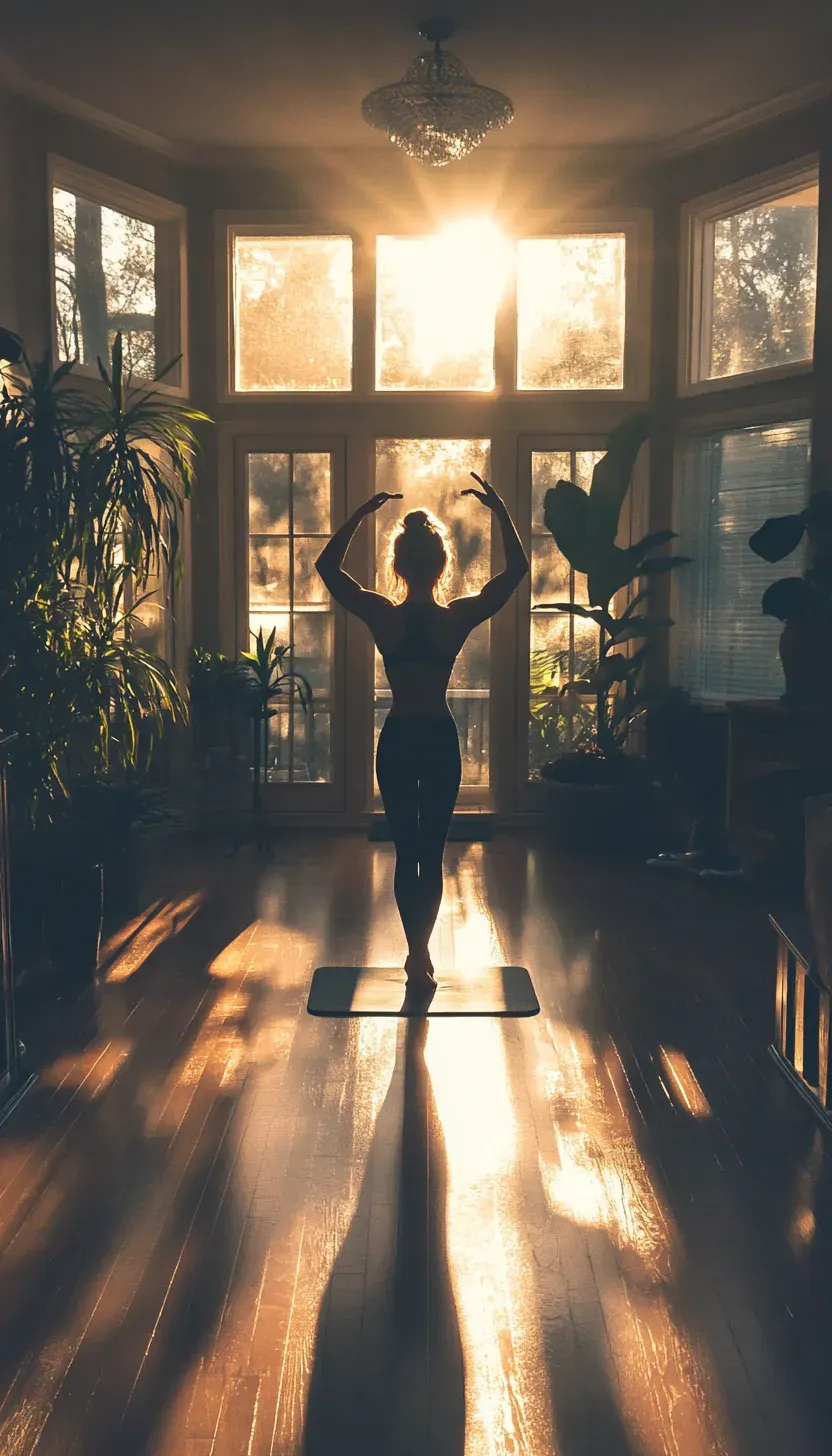Unlock Your Full Potential: Overcoming Yoga Pose Limitations
Table of Contents
Introduction
The captivating essence of yoga
Understanding flexibility as a gateway to potential
Chapter 1: Assessing Flexibility
Identifying personal limitations
Recognizing how limitations affect poses
Utilizing tools for assessment and tracking progress
Chapter 2: Strategies to Enhance Flexibility
Incorporating stretching routines into daily practice
Using props and modifications effectively
Embracing gradual progression techniques
Chapter 3: Mental Approach and Mindfulness
Cultivating the right mindset for overcoming limitations
Harnessing the power of breath and relaxation
Practicing patience and self-awareness
Chapter 4: Exploring Alternative Practices
Trying different yoga styles for varied flexibility benefits
Incorporating cross-training activities for a well-rounded practice
Seeking guidance from experienced instructors
Chapter 5: Maintaining Progress and Preventing Setbacks
Consistency as the cornerstone of progress
Listening to the body and avoiding overexertion
Dealing with setbacks positively and resiliently
Chapter 6: Sustaining Progress and Celebrating Achievements
Nurturing a mindset of continual growth
Recognizing and celebrating milestones
Embracing the journey towards self-discovery and empowerment
Conclusion
Embracing the transformative journey of yoga
Unlocking the full potential within through flexibility
In the captivating world of yoga, where breath meets movement and the mind aligns with the body, flexibility serves as a cornerstone for unlocking one's true potential on the mat. Imagine a practice where every pose feels effortless, where each stretch reveals new depths of strength and grace.
It is within these fluid movements that we comprehend the profound impact of limited flexibility—acting as both a boundary and an opportunity for growth in our yoga journey. Embracing this understanding unveils a transformative path toward not merely mastering poses but transcending limitations to achieve holistic harmony within oneself.
Assessing Flexibility: Identifying Your Areas Of Growth
Understanding your areas of limited flexibility is crucial in unlocking your full potential in yoga. By pinpointing these limitations, you can tailor your practice to focus on improving specific areas, leading to more meaningful progress. For example, if forward bends feel particularly challenging due to tight hamstrings, dedicating time to stretch and strengthen this area can bring about significant enhancements in your practice.
Without this self-assessment, progress may be slower, and frustrations with certain poses might impede your overall growth.
Limited flexibility can impact various yoga poses differently. For instance, tight hips might restrict your ability to achieve proper alignment in postures like Warrior 1 or Pigeon Pose, affecting balance and stability. Recognizing how flexibility constraints hinder the execution of poses not only sheds light on where improvements are needed but also emphasizes the importance of addressing these restrictions for a safer and more effective practice.
Through introspection and observation during practice, you can start connecting the dots between limitations and pose difficulties.
To assess and track improvements in flexibility effectively, consider keeping a yoga journal or utilizing apps that log your progress. Documenting how certain stretches or modifications feel each session can provide valuable insights into what works best for your body. Additionally, consider incorporating regular assessments using specific flexibility tests like the sit-and-reach test to measure changes over time objectively.
This proactive approach not only serves as a motivational tool but also helps in setting realistic goals based on tangible evidence of growth. By actively engaging in the process of assessing and tracking improvements, you empower yourself to make informed decisions regarding your practice and witness concrete advancements in your flexibility journey.
Strategies To Enhance Flexibility
To truly overcome the limitations that hinder your yoga practice, it’s crucial to implement specific strategies aimed at enhancing your flexibility. One of the most effective approaches is to incorporate regular stretching routines into your daily practice. Consistency is key in improving flexibility, as frequent stretching sessions help elongate muscles and increase joint mobility over time.
Think of stretching not just as a prelude to your practice but as an integral part of it; each stretch brings you closer to unlocking new levels of flexibility and mastering challenging poses.
In addition to consistent stretching, utilizing props and modifications can be a game-changer in adapting poses to suit individual needs. Props like blocks, straps, or bolsters provide support and assistance, enabling you to ease into poses that might otherwise seem unattainable.
By customizing your practice with these tools, you can gradually work towards deeper stretches without compromising alignment or risking injury. Embrace modifications as empowering tools that bridge the gap between where you are now and where you aspire to be in your practice.
When aiming for enhanced flexibility, it’s essential to embrace gradual progression techniques that prioritize safety and sustainability. Rushing into deep stretches or attempting advanced poses before your body is ready can lead to setbacks and potential injuries.
Instead, honour your body's current capabilities by progressing mindfully through stages of increasing difficulty. This methodical approach not only minimizes the risk of strain but also allows you to appreciate the journey of growth in your flexibility over time.
Remember, slow progress is still progress—each small improvement contributes significantly to your overall flexibility and prevents setbacks along the way.
Mental Approach And Mindfulness: Unlocking Your Inner Potential
A crucial yet often overlooked aspect of overcoming limitations in yoga poses is the mental approach and mindfulness cultivated during practice. The mindset you bring to your mat can significantly impact how you navigate challenges and progress in your flexibility journey.
By emphasizing the role of mindset in conquering limitations, you empower yourself to break through mental barriers that may be hindering your physical advancement. Approaching each pose with a positive attitude and belief in your ability to improve sets the foundation for success.
Breathing techniques play a pivotal role not only in enhancing relaxation during yoga practice but also in increasing flexibility. Deep, mindful breathing helps calm the nervous system, reduces tension in muscles, and allows for greater ease of movement.
Incorporating pranayama exercises into your routine can create a sense of flow and connection between breath and movement, enabling you to move deeper into poses with comfort and stability. By harnessing the power of breath, you can unlock new levels of flexibility while promoting overall well-being.
Cultivating patience and self-awareness is key to navigating the ups and downs of improving flexibility in yoga. Every individual progresses at their own pace, and it is essential to honour your body's unique journey without comparing it to others.
Mindfulness practices such as meditation can aid in developing a deeper awareness of your body's signals, helping you understand when to push boundaries safely or when to respect limits to prevent injury. By fostering a patient and self-aware approach, you not only enhance your flexibility but also nurture a harmonious relationship between mind, body, and spirit on your yoga path.
Exploring Alternative Practices For Enhanced Flexibility
In the journey of overcoming limitations in yoga poses, exploring alternative practices can be a game-changer. One effective approach is to try different types of yoga styles that cater to varying levels of flexibility. For instance, Yin Yoga focuses on passive stretching and holding poses for longer durations, which can be beneficial in targeting deep connective tissues and improving flexibility over time.
Additionally, Restorative Yoga offers supportive poses with the use of props, allowing the body to relax deeply into each posture, aiding in releasing tension and increasing flexibility gradually.
Incorporating cross-training activities alongside your yoga practice can also significantly contribute to enhancing flexibility. Activities such as Pilates or dance classes can complement yoga by targeting different muscle groups and movement patterns, resulting in a more well-rounded physical development. These cross-training activities not only aid in increasing overall flexibility but also provide a fresh perspective on movement that can positively impact your yoga practice.
Seeking guidance from experienced instructors or practitioners can provide valuable insights and personalized tips on how to navigate through limitations in yoga poses effectively. By working closely with an instructor who understands your unique body mechanics and limitations, you can receive tailored guidance on modifications, techniques, and specialized practices that suit your individual needs. Their expertise can help you break through plateaus and explore new ways to improve your flexibility while avoiding pitfalls.
By embracing these alternative practices with an open mind and a willingness to experiment, you are setting yourself up for a transformative journey towards unlocking your full potential in yoga. Remember that everybody is different, and what works for one person may not work for another – so don't hesitate to explore various options until you find what resonates best with you.
Through this exploration process guided by knowledgeable mentors and diverse practices, you will not only enhance your flexibility but also deepen your understanding of the intricate connection between mind, body, and spirit within the realm of yoga.
Maintaining Progress And Preventing Setbacks
Consistency in practice is the cornerstone of progress in enhancing flexibility for yoga practitioners. The journey towards overcoming pose limitations requires dedication and commitment to regular practice. Just as a tree grows stronger with consistent watering and care, your flexibility improves with continuous effort. By establishing a routine that includes stretching and poses tailored to address your specific limitations, you set yourself up for gradual but significant improvements over time.
Moreover, it is crucial to listen to your body during practice to identify warning signs of overstretching or pushing beyond your current limits. Ignoring these signals can lead to injuries that may hinder your progress or even set you back.
For instance, if you feel sharp pain instead of a gentle stretch sensation, it's important to ease off the pose and reassess. Recognizing these cues allows you to adjust your approach safely and effectively, ensuring sustained growth without setbacks.
In dealing with setbacks, approaching them positively is key to maintaining motivation and momentum on your flexibility journey. Setbacks are natural in any learning process, including yoga practice to improve flexibility.
Rather than becoming discouraged by challenges or temporary plateaus, see them as opportunities for learning and course correction. By utilizing setbacks as lessons on what works best for your body and adjusting your approach accordingly, you not only prevent further hindrances but also foster resilience and adaptability within your yoga practice.
Sustaining Progress And Celebrating Achievements
As you continue on your journey of overcoming limitations in yoga poses, remember that sustaining progress is a testament to your dedication and perseverance.
Consistency in your practice, whether committing to daily stretches, incorporating modifications, or exploring alternative practices, will be the cornerstone of your success. While setbacks may occur along the way, viewing them as opportunities for growth and positive adjustment can propel you forward in your flexibility goals.
Celebrating achievements is crucial in maintaining motivation and reinforcing the sense of accomplishment throughout your yoga practice. Take moments to appreciate how far you've come, no matter how small the advancement might seem.
By acknowledging and honouring these milestones, whether it's touching your toes for the first time or holding a challenging pose longer than before, you are nurturing a mindset of positivity and self-empowerment that will carry you further than you thought possible.
Remember that each pose conquered and every ounce of increased flexibility is a step towards unlocking your full potential on and off the mat. Embrace the journey, stay committed to your growth, and celebrate every victory – big or small.
Your dedication to overcoming limitations not only transforms your physical practice but also shapes your mental resilience and belief in what you can achieve. Keep pushing boundaries, keep evolving, and keep embracing the journey towards becoming the best version of yourself through yoga.
People Also Asked
1. Why is flexibility important in yoga?
Flexibility is crucial in yoga as it allows for proper alignment, enhances range of motion, and reduces the risk of injury. It also enables practitioners to deepen their poses and progress in their practice.
2. How do I know if I have limited flexibility?
Signs of limited flexibility include difficulty reaching certain poses, feeling tightness or discomfort during stretches, and experiencing challenges in achieving proper alignment in poses.
3. Can anyone improve their flexibility, regardless of age or body type?
Yes, absolutely! While individual factors like genetics and previous injuries may influence flexibility to some extent, consistent practice and proper techniques can help improve flexibility for people of all ages and body types.
4. How often should I stretch to improve flexibility?
Consistency is key. Aim to incorporate stretching into your daily routine, even if it's just a few minutes each day. Regular practice will yield better results than sporadic, intense stretching sessions.
5. Will using props and modifications hinder my progress in yoga?
Not at all! Props and modifications are tools to support your practice, not crutches. They can help you access poses safely and effectively, allowing you to gradually build flexibility and strength over time.
6. What should I do if I feel pain during a stretch?
Pain during a stretch is a sign that you may be pushing too far. Back off the stretch slightly until you feel a comfortable sensation, often described as a gentle pull or stretch. Listen to your body and avoid pushing into sharp or intense pain.
7. How long does it take to see improvement in flexibility?
The timeline for improvement varies from person to person based on factors like consistency, genetics, and current level of flexibility. With regular practice, you may start to notice improvements within a few weeks to a few months.
8. Can yoga help with specific areas of limited flexibility, such as tight hips or hamstrings?
Absolutely. Yoga poses target different muscle groups and areas of the body, allowing you to focus on specific areas of limited flexibility. Poses like hip openers and hamstring stretches can be particularly beneficial for addressing tightness in these areas.
9. What role does mindset play in overcoming yoga pose limitations?
Mindset is crucial. Approaching your practice with a positive attitude, patience, and self-compassion can help you navigate challenges and setbacks more effectively. Cultivating a mindset of growth and resilience is key to overcoming limitations.
10. How do I stay motivated on my flexibility journey?
Set realistic goals, celebrate small victories, and focus on the journey rather than the destination. Find joy in the progress you make, no matter how small, and surround yourself with supportive communities or mentors who can encourage and inspire you along the way.
Recommended Products
1. Yoga Blocks: These are essential for providing support and stability during poses, especially for those working on flexibility. Promote high-quality yoga blocks that are durable and lightweight.
2. Stretching Strap: A stretching strap assists in reaching deeper into stretches and improving flexibility over time. Look for adjustable straps with sturdy D-ring buckles for versatility.
3. Yoga Mat: A comfortable and non-slip yoga mat is essential for a safe and effective practice. Promote mats with excellent grip and cushioning to support practitioners in their flexibility journey.
4. Foam Roller: Foam rollers help release tension in muscles and improve flexibility by targeting tight areas. Recommend foam rollers with varying densities to cater to different levels of intensity.
5. Yoga Wheel: Yoga wheels offer a deeper stretch and aid in improving flexibility, especially in backbends and hip openers. Promote durable yoga wheels with comfortable padding for enhanced support.






